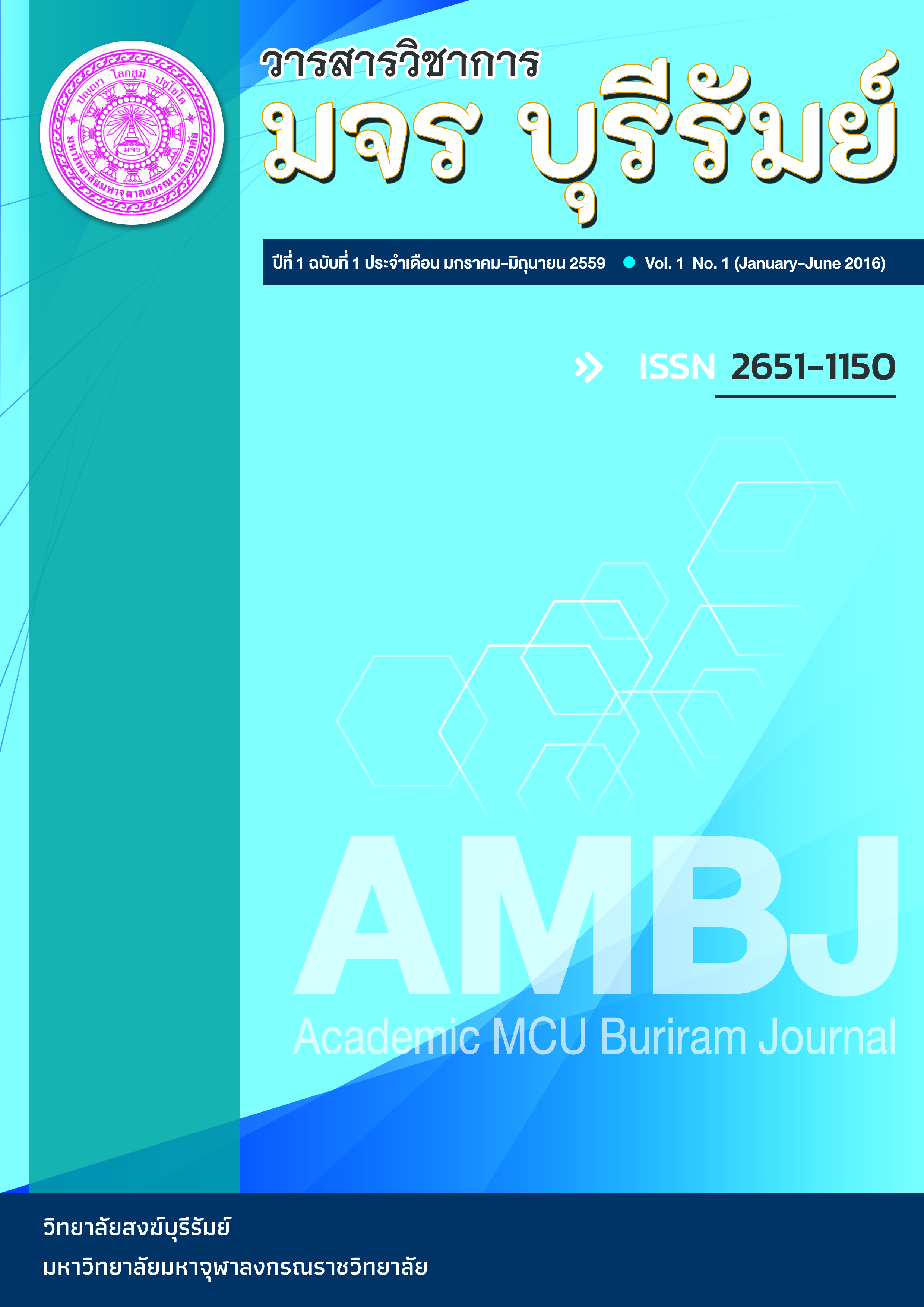A Study of Perfection Practice and the Pannadhika Buddha Attained the Enlightenment
Keywords:
Pāramī, Enlightenment, Paññādhika-BuddhasAbstract
The research found that Pāramī: (Perfections) means the conditions that would lead one’s mind to a perfect stage. It is the ultimate practice if one’s aiming for the highest goal. A Bodhisatta must meet this goal in order to gain Enlightenment. There are three types of Bodhisattas, namely, (1) Paññādhika-Bodhisatta, (2) Saddhadhika-Bodhisatta, and (3) Viriyadhika-Bodhisatta The Bodhisatta elevate his mind from the commoner’s level. He possesses 8 qualifications. Even if he has received prediction (that he will become future Buddha) from the former Buddha. He will be a Nicca-Bodhisatta, which is not to fall into the 18 categories of major wrong doings or Abhṭhāna. He must accomplish the Buddha-kārakadhamma 10 Perfections namely, Dāna: giving, Sīla: good conduct, Nekkhamma: renunciation, Paññā: wisdom, Viriya: effort, Khanti: forbearance, Sacca: truthfulness, Adhiṭṭhāna: resolution, Mettā: loving kindness and Upekkhā: equanimity. The Paññādhika-Bodhisatta must accomplish Pāramī: ordinary perfections, Upapāramī: superior perfections and Paramatthapāramī: supreme perfections. All the Buddhas had attain the Arahantship, 13 specific qualifications, 11 specific characteristics, Dasa-balañāṇa, Chaḷāsādhāraṇa-ñāṇa 6, the thirty-two marks of the Great Man and 80 subsidiary characteristics. The Buddha must be born male, born in India and from either a king or Brahman family only. Paññādhika-Buddha has Indriya-dhamma as his lead to Enlightenment. He is led more by wisdom than faith. How became Paññādhika-Buddha found in 256 stories focus on how he developed his Wisdom Perfections. This is for example the story of Mahosadha. There were details about 25 Buddhas with 6 of the Buddhas had fixed details on length of developing Perfection. There were two types of information: 1) Four aeons and one hundred thousand kalpas, 2) Sixteen aeons and one hundred thousand kalpas while no length of perfection-development of other 19 Buddhas were found. The research found that there were 3 Paññādhika-Buddhas, namely, Sobhita Buddha, Naradha Buddha and Kotama Buddha. However, it cannot be concluded that there were only 3 of this kind and the life-span of a Buddha cannot be used as a set-standard to classify types of the Buddha.
Downloads
Published
How to Cite
Issue
Section
License
ทัศนะและความคิดเห็นที่ปรากฏในบทความวารสารฉบับนี้ถือเป็นความรับผิดชอบของผู้เขียนบทความนั้น ไม่ถือเป็นทัศนะและความรับผิดชอบของบรรณาธิการ





